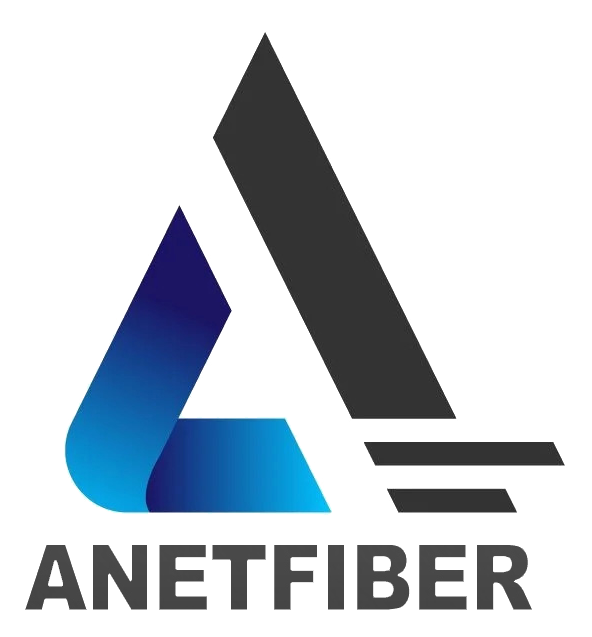The Crucial Role of Fiber Optic Infrastructure in Telecommunications

Understanding Fiber Optic Infrastructure Development
Fiber optic technology has revolutionized the telecommunications industry, providing high-speed data transmission and reliable connectivity. Understanding the development of fiber optic infrastructure is crucial in grasping the backbone of modern communication networks.
The Basics of Fiber Optic Technology
Fiber optics utilize fiber optic cables to transmit data using light pulses. These cables are composed of thin strands of glass or plastic that carry digital information over long distances. The use of light enables rapid data transfer, making fiber optic technology essential for high-bandwidth applications such as internet services, telephony, and cable television.
Importance of Infrastructure Development in Telecommunications
The continuous expansion and enhancement of infrastructure development play a pivotal role in meeting the escalating demands for faster and more reliable communication networks. As consumer expectations for seamless connectivity increase, so does the need for robust infrastructure development to support these requirements. Moreover, as new technologies emerge, such as 5G and Internet of Things (IoT), the significance of advancing infrastructure development becomes even more pronounced.
Key Components of Fiber Optic Infrastructure
As the demand for high-speed and reliable connectivity continues to soar, infrastructure development in the telecommunications sector has become increasingly vital. The key components of fiber optic infrastructure encompass various networks and transmission lines that form the backbone of modern communication systems.
Fiber Optic Backbone Networks
Fiber optic backbone networks serve as the primary infrastructure for transmitting data across vast distances. These networks form the core framework for interconnecting different geographical locations, enabling seamless communication between various endpoints. Their role and function are fundamental in ensuring the efficient flow of data traffic, supporting a wide array of applications from internet services to enterprise networking solutions.
Fiber Optic Metropolitan Area Networks (MANs)
In urban and suburban settings, Fiber optic metropolitan area networks (MANs) play a crucial role in connecting cities and regions within a localized area. These networks facilitate high-speed data transmission between metropolitan areas, supporting the growing need for interconnected smart city initiatives, business districts, and residential communities. The deployment of MANs enhances local connectivity and fosters economic growth by providing businesses with robust network infrastructure.
Fiber Optic Long-Haul Transmission Lines
Fiber optic long-haul transmission lines are designed to bridge extensive distances, linking cities, states, and even countries. These transmission lines form the backbone of global communication networks, enabling seamless data exchange over extended geographic regions. By leveraging advanced optical technologies, long-haul transmission lines ensure efficient data transfer over extended distances while maintaining signal integrity and reliability.
Fiber Optic Submarine Cable Systems
In the realm of global connectivity, fiber optic submarine cable systems play a pivotal role in linking continents and enabling seamless international communication. These sophisticated undersea networks are instrumental in facilitating the exchange of vast volumes of data across transoceanic distances.
The deployment of fiber optic submarine cable systems involves intricately engineered cables that are designed to withstand the harsh underwater environment while ensuring efficient data transmission. These cables utilize advanced optical technology to carry data signals across oceans, connecting various regions and continents. By leveraging light pulses to transmit information, these systems enable high-speed and reliable communication links between distant locations.
One of the primary advantages of fiber optic submarine cable systems is their ability to support the ever-increasing demand for global data transfer. As digital connectivity becomes increasingly integral to various sectors such as finance, healthcare, and research, these undersea networks play a critical role in sustaining international collaboration and information exchange.
Moreover, fiber optic submarine cable systems contribute significantly to enhancing the resilience and redundancy of global communication infrastructure. By establishing multiple interconnected routes across different oceanic regions, these systems mitigate the risk of disruptions and ensure continuous connectivity even in the face of unforeseen events or natural disasters.
In essence, fiber optic submarine cable systems serve as vital conduits for intercontinental data transmission, underpinning the foundation of modern global communications and supporting diverse international endeavors.
Strategies for Fiber Optic Network Expansion
Expanding fiber optic networks requires strategic planning and implementation to meet the escalating demands for high-speed data transmission and reliable connectivity. By adopting effective Fiber optic network expansion strategies, telecommunications companies can ensure the seamless growth of their infrastructure while addressing the evolving needs of consumers and businesses.
Planning for Future Growth
To facilitate the expansion of fiber optic networks, companies must engage in comprehensive planning to anticipate future requirements. This involves conducting thorough assessments of current network capacities, identifying potential areas for expansion, and forecasting the demand for enhanced connectivity. By analyzing data traffic patterns and emerging technological trends, organizations can strategically allocate resources to deploy additional fiber optic infrastructure where it is most needed.
Moreover, collaboration with urban planners, local authorities, and community stakeholders is essential to align network expansion efforts with anticipated population growth and economic development. By integrating future growth projections into their expansion strategies, companies can proactively build a robust foundation for sustained connectivity in both urban and rural settings.
In addition to physical expansion, investing in advanced networking technologies such as wavelength division multiplexing (WDM) and coherent optical transmission systems enables companies to enhance the capacity and efficiency of their fiber optic networks. These technological advancements empower organizations to accommodate increasing data volumes while maintaining optimal performance across their expanded infrastructure.
Ensuring Network Reliability
As infrastructure development progresses, ensuring the resilience and redundancy of Fiber optic infrastructure becomes paramount. Implementing robust redundancy planning safeguards against potential disruptions caused by natural disasters, equipment failures, or cyber threats. This involves establishing diverse network routes, deploying backup power systems, and incorporating failover mechanisms to maintain uninterrupted service delivery.
Furthermore, proactive maintenance schedules and continuous monitoring are critical aspects of ensuring the reliability of expanded fiber optic networks. Regular inspections, performance evaluations, and preemptive repairs mitigate the risk of service interruptions while upholding network integrity. Additionally, leveraging predictive analytics and artificial intelligence-driven diagnostics enhances organizations' ability to identify potential vulnerabilities within their expanded infrastructure proactively.
By prioritizing reliability in conjunction with expansion efforts, telecommunications companies can instill confidence in consumers and businesses regarding the steadfastness of their communication services. This approach not only fosters customer loyalty but also strengthens the overall resilience of national communication infrastructures.
Funding and Financing Fiber Optic Infrastructure
In the realm of telecommunications, funding and financing for fiber optic infrastructure are pivotal in driving the expansion and enhancement of modern communication networks. As the demand for high-speed data transmission continues to escalate, securing adequate resources for infrastructure development becomes imperative to meet the evolving connectivity needs of consumers and businesses.
Fiber Optic Infrastructure Funding and Financing
The funding and financing of fiber optic infrastructure encompass a diverse array of sources and models that enable telecommunications companies to undertake substantial network expansion projects. Understanding these mechanisms is essential in orchestrating sustainable financial strategies to support the continuous growth of fiber optic networks.
Sources and Models
Public-Private Partnerships (PPPs): Public-private partnerships serve as a fundamental source of funding for fiber optic infrastructure projects, enabling collaboration between government entities and private telecommunications companies. Through PPPs, governments can allocate resources for network expansion initiatives while leveraging the expertise and investment capabilities of private sector partners. This model fosters synergistic efforts in deploying advanced fiber optic networks across urban, suburban, and rural areas, thereby enhancing overall connectivity nationwide.
Investment from Telecommunications Corporations: Major telecommunications corporations play a pivotal role in financing fiber optic infrastructure through direct investments in network expansion projects. By allocating substantial capital towards deploying state-of-the-art fiber networks, these corporations drive technological innovation while meeting the escalating demands for high-speed data transmission. Their investments contribute to bolstering national communication infrastructures, fostering economic growth, and supporting digital transformation initiatives across various industry sectors.
Government Grants and Subsidies: Governments often provide grants and subsidies to facilitate the deployment of critical fiber optic infrastructure in underserved or economically disadvantaged regions. These financial incentives aim to bridge the digital divide by ensuring equitable access to high-speed connectivity across diverse communities. By availing grants and subsidies, telecommunications companies can extend their network coverage into remote areas, empowering residents with enhanced communication capabilities while promoting social inclusion.
Venture Capital Funding: Venture capital firms actively participate in financing innovative fiber optic infrastructure projects that demonstrate potential for technological advancement and market disruption. By injecting capital into pioneering fiber network initiatives, venture capitalists catalyze the development of cutting-edge communication technologies while fostering entrepreneurial endeavors within the telecommunications sector.
Debt Financing through Bonds: Telecommunications companies often resort to debt financing by issuing bonds to raise substantial funds for large-scale network expansion ventures. Bond offerings enable organizations to secure long-term capital from investors who seek fixed-income securities backed by the future revenue streams generated from expanded fiber networks.
International Development Assistance: International organizations dedicated to global development may provide assistance in funding critical fiber optic infrastructure projects in emerging economies or regions facing infrastructural challenges. This support aims to fortify international connectivity while promoting socio-economic progress through enhanced access to advanced communication networks.
Crowdfunding Initiatives: In some instances, community-driven crowdfunding campaigns serve as an alternative means of raising funds for localized fiber network deployments within specific neighborhoods or municipalities. These grassroots initiatives empower local residents to collectively invest in building robust community-based fiber infrastructures that cater directly to their unique connectivity requirements.
By harnessing a combination of these diverse funding sources and models, telecommunications companies can orchestrate comprehensive financial frameworks that underpin the sustained expansion of modern fiber optic infrastructure, ensuring ubiquitous high-speed connectivity across diverse geographical landscapes.
Regulatory and Environmental Considerations
In the realm of telecommunications, the deployment and expansion of fiber optic infrastructure are subject to stringent regulatory requirements and environmental impact assessments. These considerations are essential in ensuring compliance with industry standards, minimizing ecological footprint, and fostering sustainable development.
Fiber Optic Infrastructure Regulatory Requirements
The establishment and operation of fiber optic infrastructure necessitate adherence to comprehensive regulatory frameworks that govern network deployment, maintenance, and service provision. Compliance with these regulations is imperative to uphold the integrity, security, and interoperability of communication networks while safeguarding consumer interests.
Telecommunications authorities enforce a spectrum of Fiber optic infrastructure regulatory requirements aimed at promoting fair competition, protecting user privacy, and maintaining network reliability. These regulations encompass licensing provisions for network operators, quality-of-service standards for data transmission, and consumer protection measures against fraudulent practices or service disruptions.
Moreover, industry-specific compliance standards such as those outlined by the International Telecommunication Union (ITU) and regional regulatory bodies dictate technical specifications for fiber optic infrastructure, including signal modulation techniques, transmission power limits, and electromagnetic interference mitigation strategies. Adhering to these standards ensures harmonized deployment practices across diverse geographical regions while fostering global connectivity interoperability.
Fiber Optic Infrastructure Environmental Impact Assessments
Conducting comprehensive environmental impact assessments is integral to mitigating the ecological footprint associated with deploying fiber optic infrastructure. These assessments evaluate the potential effects of network expansion on natural ecosystems, wildlife habitats, and local communities to proactively address environmental concerns.
Minimizing Ecological Footprint
By embracing environmentally conscious practices throughout the lifecycle of infrastructure development, telecommunications companies can mitigate adverse environmental impacts while promoting sustainable growth. Strategies such as utilizing eco-friendly construction materials for laying fiber cables, implementing energy-efficient network equipment, and adopting responsible land use practices contribute to minimizing the ecological footprint of fiber optic infrastructure deployments.
Furthermore, engaging in reforestation initiatives in areas affected by network construction activities serves to restore ecological balance and preserve biodiversity. By replanting native vegetation and supporting habitat restoration projects in collaboration with environmental conservation organizations, telecommunications companies demonstrate their commitment to environmental stewardship while offsetting any ecological disturbances caused by network expansion efforts.
In essence, integrating rigorous environmental impact assessments into fiber optic infrastructure development endeavors enables companies to align their expansion strategies with sustainable principles while preserving natural ecosystems for future generations.
Maintaining and Upgrading Fiber Optic Infrastructure
As the telecommunications landscape continues to evolve, the maintenance and upgrading of fiber optic infrastructure play a pivotal role in sustaining optimal network performance and accommodating technological advancements. Ensuring the seamless operation of existing networks while embracing innovative upgrades is essential for meeting the escalating demands for high-speed data transmission and reliable connectivity.
Fiber Optic Infrastructure Maintenance and Upgrades
The maintenance of fiber optic infrastructure encompasses a comprehensive array of activities aimed at preserving network integrity and addressing potential performance issues. Regular inspections, diagnostic assessments, and preventive maintenance measures are instrumental in identifying and rectifying any anomalies within the network architecture. By proactively addressing signal degradation, cable wear, or equipment malfunctions, organizations can uphold the reliability and efficiency of their fiber optic networks.
Moreover, embracing technological upgrades such as enhanced signal processing algorithms, advanced optical amplification techniques, and next-generation transmission protocols enables organizations to optimize the capacity and speed of their existing fiber optic infrastructure. These upgrades empower networks to accommodate burgeoning data volumes while enhancing overall data transfer rates, thereby meeting the evolving connectivity needs of consumers and businesses.
Keeping Networks Up-to-Date
To ensure that fiber optic infrastructure remains at the forefront of technological innovation, it is imperative to keep networks up-to-date with the latest advancements in optical communication technologies. This involves integrating state-of-the-art networking equipment, leveraging cutting-edge fiber cable designs, and adopting advanced network management systems that facilitate real-time monitoring and control.
By staying abreast of industry developments such as coherent transmission technologies, software-defined networking (SDN), and network function virtualization (NFV), organizations can future-proof their fiber optic infrastructure, positioning it as a robust foundation for next-generation communication services. Embracing continuous updates and modernization initiatives enables networks to adapt to emerging connectivity paradigms such as 5G wireless integration, cloud-based services, and Internet of Things (IoT) applications.
The Future of Fiber Optic Infrastructure
Looking ahead, the future of fiber optic infrastructure is poised to be shaped by a myriad of innovations and trends that will redefine communication networks on a global scale. From revolutionary technological breakthroughs to transformative deployment strategies, the trajectory of fiber optics holds immense promise for reshaping how data is transmitted across vast distances.
Innovations and Trends
Innovations in fiber optics are set to revolutionize communication networks through advancements such as hollow-core fibers that minimize signal distortion over extended distances. Additionally, developments in space-division multiplexing (SDM) hold potential for exponentially increasing data capacities within existing fiber cables while reducing latency.
Furthermore, trends in network convergence through integrated photonics solutions are expected to streamline network architectures by consolidating multiple functions onto a single platform. This convergence paves the way for more efficient resource utilization while simplifying network management complexities.
As these innovations permeate into mainstream deployment practices, they will usher in an era of unparalleled connectivity capabilities that transcend current limitations. The future landscape of fiber optic infrastructure promises not only enhanced speed and capacity but also greater adaptability to dynamic communication requirements across diverse sectors.


